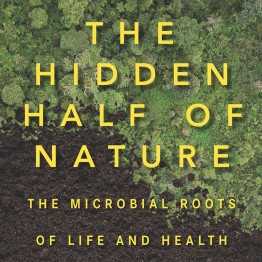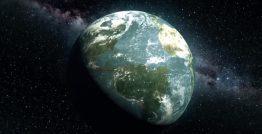A new book by Earth and Space Sciences‘ David Montgomery weaves history, science and personal challenges into an exploration of humanity’s tangled relationship with microbes, perhaps the least loved and most misunderstood creatures on Earth—and in you. “The Hidden Half of Nature: The Microbial Roots of Life and Health” comes out Nov. 16 from W.W. Norton & Co. Montgomery, a UW professor of Earth and space sciences, co-wrote the book with his wife, Anne Biklé, a biologist and environmental planner.
Read more at UW Today »Natural Hazards and Resilient Communities: Q&A with UW’s John Vidale
The UW’s John Vidale is a man of many titles—professor of Earth and Space Sciences, director of the Pacific Northwest Seismic Network, and Washington state seismologist. More recently, Vidale helped launch the university’s M9 Project, a cross-disciplinary effort whose goal is to reduce the catastrophic potential effects of a Cascadia megathrust earthquake. Earlier this year, an article in the New Yorker stirred up panic nationwide over the looming possibility of megaquake along the Cascadia Fault.
Read more »UW affiliate prof writes biography about discoverer of continental drift
Mott Greene, an emeritus professor at the University of Puget Sound in Tacoma and an affiliate professor in the UW’s Department of Earth & Space Sciences, has published a biography of Alfred Wegener, the man who laid the foundations for plate tectonics. “Alfred Wegener: Science, Exploration, and the Theory of Continental Drift” was published this month by Johns Hopkins University Press.
Read more at UW Today »Simulating path of ‘magma mush’ inside an active volcano
Months of warning signs from Mauna Loa, on Hawaii’s Big Island, prompted the U.S. Geological Survey to recently start releasing weekly updates on activity at the world’s largest active volcano. For now, such warning signs can only rely on external clues, like earthquakes and gas emissions. But a University of Washington simulation has managed to demonstrate what’s happening deep inside the volcano.
Read more at UW Today »Natural Hazards and Resilient Communities: Q&A with UW's David Montgomery
UW’s David R. Montgomery, professor of Earth & Space Sciences, knows there’s more to our planet’s surface than what’s at surface level. The geomorphologist studies the ground beneath our feet; both its propensity to shift and evolve and how those processes might affect ecological systems and human societies past and present.
Read more »





